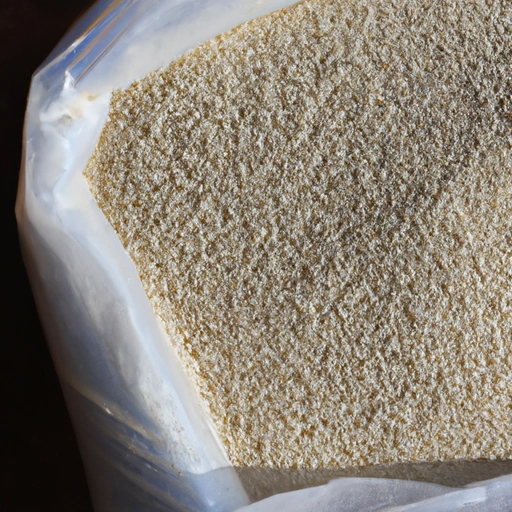Dry Active Yeast
Description

Dry active yeast is a type of yeast that is commonly used as a leavening agent in baking. It is a granulated form of Saccharomyces cerevisiae, a species of yeast that is instrumental in fermentation processes. Dry active yeast comes in small, dehydrated granules that are activated when dissolved in warm water. This ingredient is essential for causing dough to rise, resulting in light and fluffy breads, pastries, and other baked goods.
Common uses
Dry active yeast is primarily used for its leavening properties in baking. It is responsible for the rising of bread dough and is widely used in the production of various types of bread, rolls, pizza dough, and other flour-based products.
Nutritional value
Calories
Per teaspoon (approx. 3.5 grams), dry active yeast contains about 11 calories.
Protein
Dry active yeast is a good source of protein, with about 1.5 grams per teaspoon.
Fat
It is virtually fat-free, with less than 0.1 grams per teaspoon.
Carbohydrates
Carbohydrates in dry active yeast amount to approximately 1.3 grams per teaspoon.
Vitamins
It is also a source of B-complex vitamins, particularly B1 (Thiamine), B2 (Riboflavin), B3 (Niacin), B5 (Pantothenic acid), B6, B7 (Biotin), and B9 (Folic acid).
Minerals
Dry active yeast contains minerals such as iron, selenium, and zinc.
Health benefits
As a source of proteins and B-vitamins, dry active yeast can contribute to a healthy diet, supporting metabolism and energy production. The minerals present in yeast also play important roles in various bodily functions.
Potential risks
Those with yeast allergies or intolerances should avoid dry active yeast. Excessive consumption could also lead to digestive issues due to its high fiber content.
Common recipes
Dry active yeast is commonly found in recipes for bread, pizza dough, rolls, buns, and certain pastries.
Cooking methods
Before use in recipes, dry active yeast is usually rehydrated in warm water (between 105°F to 115°F or 40°C to 46°C) until it becomes frothy, a sign that the yeast is active and ready to leaven dough.
Pairing with other ingredients
Dry active yeast pairs well with various ingredients such as flour, sugar, salt, and water, and it is often used in combination with fats like butter or oil to enrich dough.
Summary
Dry active yeast is an essential ingredient in baking, known for its role in leavening bread and other baked goods. It is appreciated for its nutritional benefits and versatility in recipes worldwide. When using dry active yeast, it is important to activate it properly and measure it accurately, using either teaspoons (US) or grams (metric) to ensure the best results in your culinary endeavors.